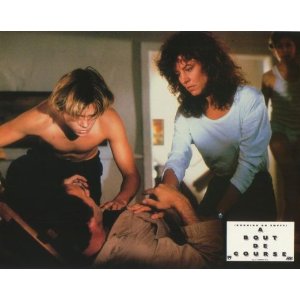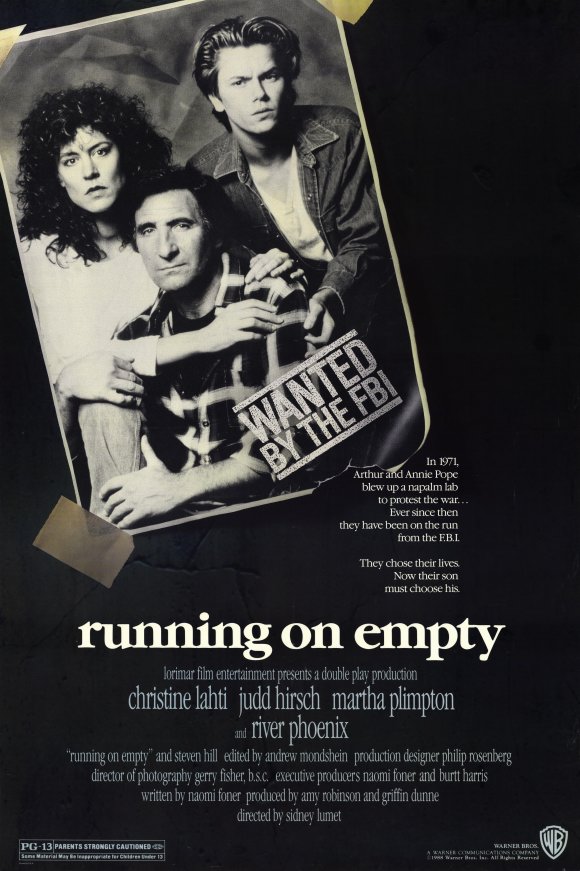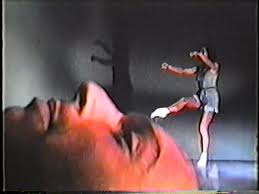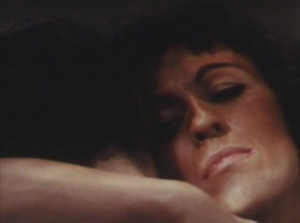Liberals in Hiding [RUNNING ON EMPTY]
From the Chicago Reader (October 11, 1988). — J.R.

RUNNING ON EMPTY
** (Worth seeing)
Directed by Sidney Lumet
Written by Naomi Foner
With Christine Lahti, River Phoenix, Judd Hirsch, Martha Plimpton, Jonas Abry, Ed Crowley, and Steven Hill.
It’s a truism that the distant past is easier to see clearly than the more recent past, so it shouldn’t be too surprising that current movie depictions of the 40s and 50s — Tucker, to name just one — tend to be more accurate, at least about the dreams and fantasies of those periods, than movies about the 60s and 70s. Paul Schrader’s recently departed Patty Hearst offers a salient case in point: it can only broach the early 70s through a sitcom or comic-book reduction of the way that radicals talk and think — a myopic 80s reading of the period that leaves a number of gaps in the picture. Schrader fills in some of these gaps by clever employments of style and attitude, the stock-in-trade of any current music video, but in the end one huge gap remains: Who was Patty Hearst? What was the Symbionese Liberation Army? Why should anyone be concerned with them? The attention-getting nowness of the film blots out any possibility for history or social observation; just as Schrader’s earlier Mishima seemed to have more to do with Las Vegas than with any reading of Japanese history or culture, his take here on 60s/70s radicalism seems mired exclusively in the preoccupations of the present. Read more



